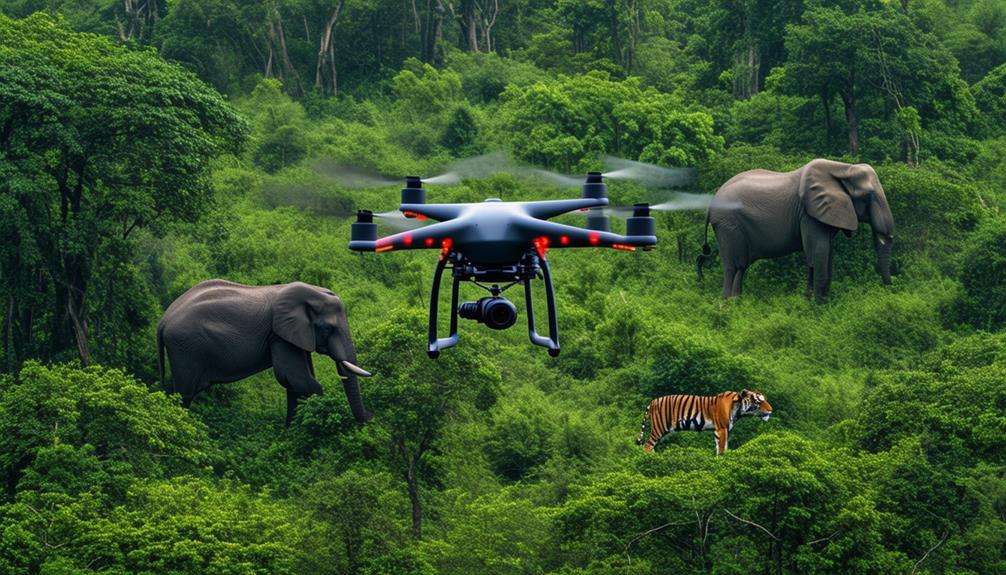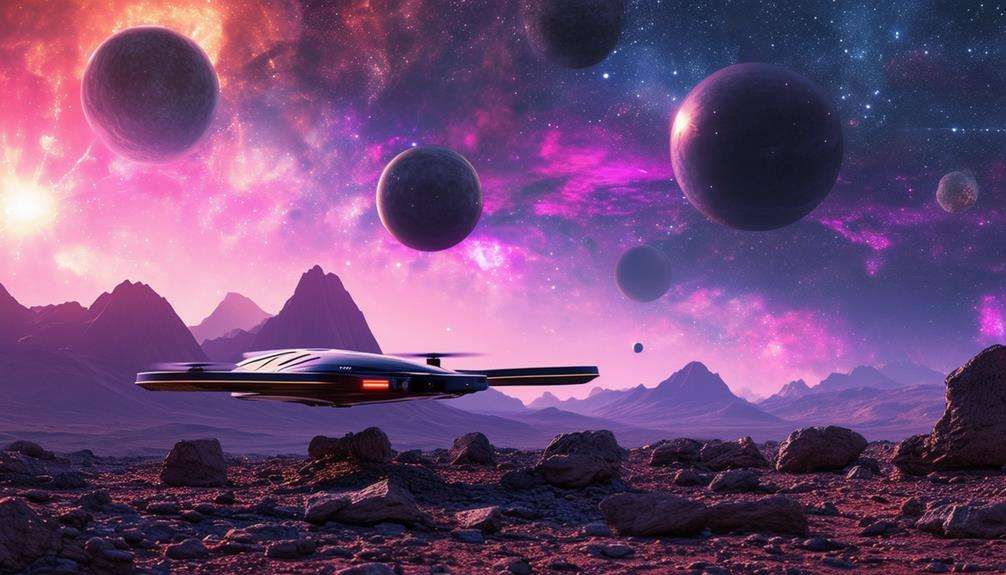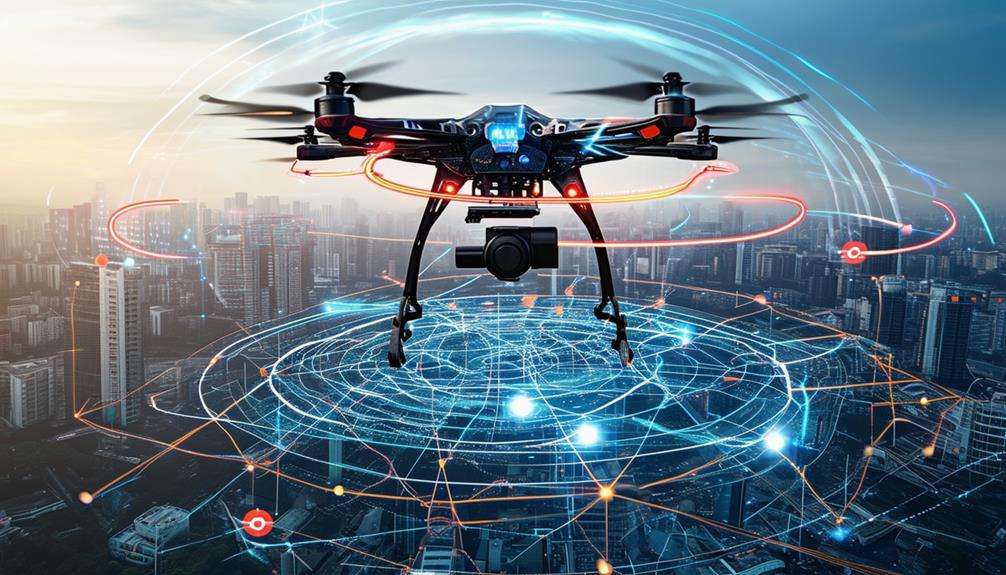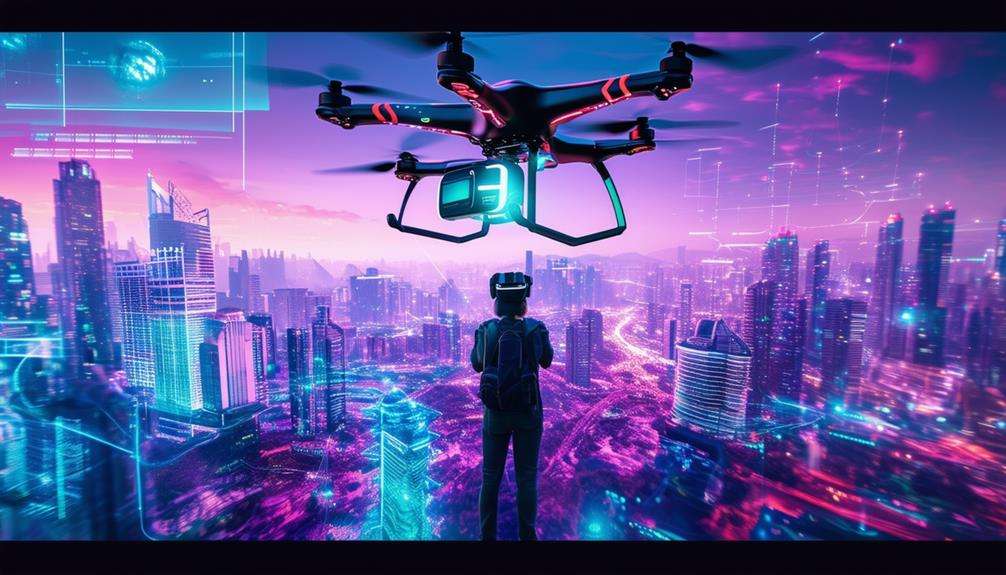The Role of Drones in the Evolution of Aerial Photography
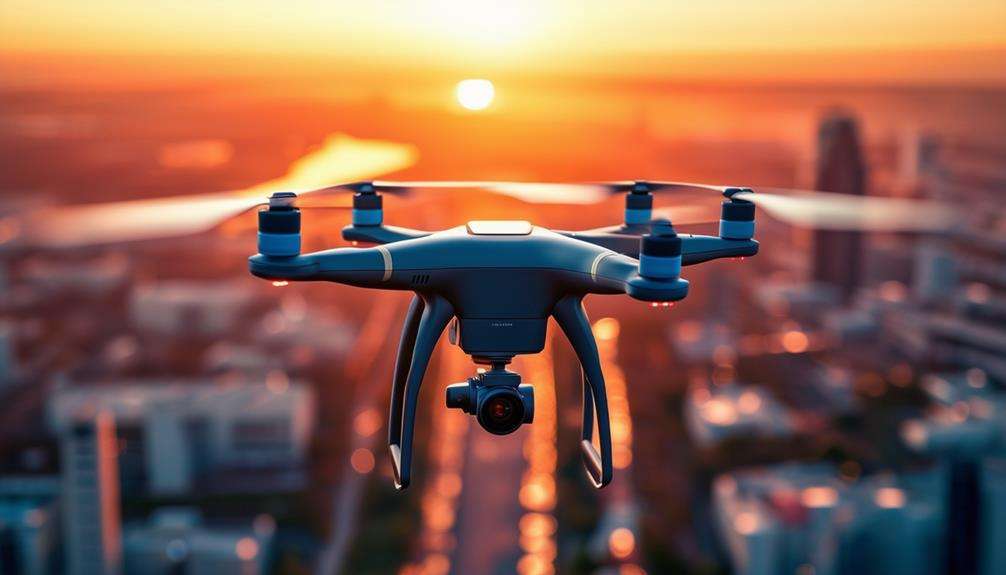
Imagine having the power to capture stunning aerial views without ever leaving the ground. Drones have revolutionized the field of aerial photography, making it accessible to enthusiasts and professionals alike.
Equipped with high-resolution cameras and intelligent flight systems, drones allow for creative perspectives that were once the domain of pilots. But how exactly have drones reshaped the industry, and what challenges and opportunities lie ahead? Let's explore how this technology has opened up new horizons in the world of photography.
Historical Background
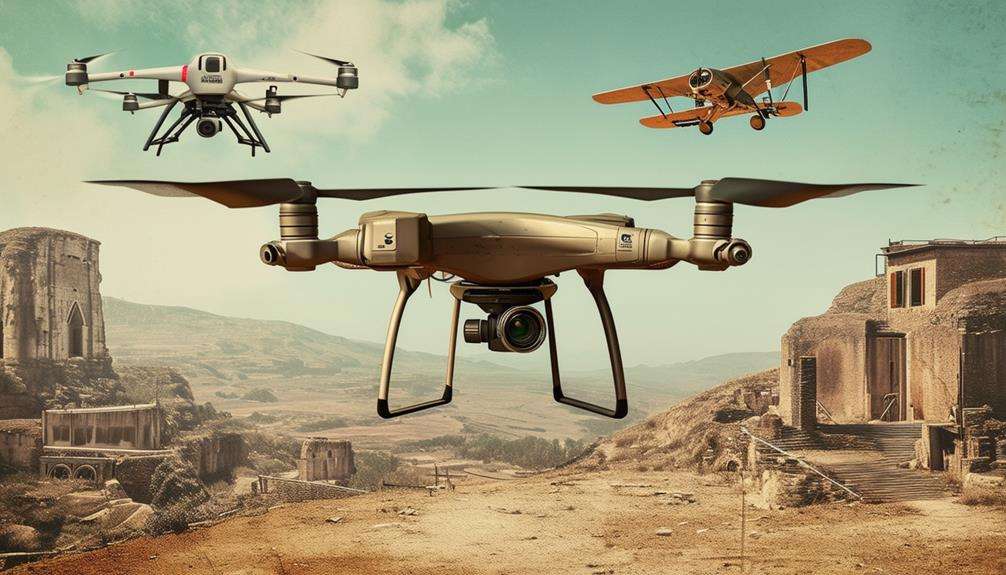
The origins of aerial photography can be traced back to the mid-19th century when innovators used balloons, kites, and rockets to capture images from above. Key figures such as Nadar, James Wallace Black, and George Lawrence made notable contributions by attaching cameras to these early aerial devices, laying the groundwork for a transformative field.
The evolution of aerial photography is particularly evident during periods of conflict. World War I marked a significant milestone with the advent of aerial reconnaissance, where military strategists used aerial images to monitor enemy movements and plan attacks more effectively. This era underscored the strategic value of capturing images from the sky.
The progression of aerial photography continued through the Space Race and the Cold War, with the introduction of satellite imagery dramatically enhancing our ability to capture detailed images of the Earth.
Today, drones represent the modern face of aerial photography, showcasing the substantial advancements from the early days of balloons. Understanding this history provides valuable insight into the technological evolution of capturing our world from above.
Technological Advancements
You're now witnessing drones with high-resolution cameras capturing stunning, detailed images. These drones offer enhanced flight stability for smooth, steady shots even in challenging conditions. With these advancements, aerial photography achieves unprecedented quality and precision.
High-Resolution Imaging Capabilities
Modern drones are equipped with high-resolution cameras, often reaching up to 48 megapixels, enabling the capture of incredibly detailed aerial images. These cameras are integrated with advanced sensor technology, ensuring precise color reproduction, dynamic range, and clarity. This sensor technology allows for professional-quality images, capturing every intricate detail from above.
To maintain sharpness, drones feature 3-axis gimbal stabilization, ensuring steady shots even in windy conditions for smooth, blur-free images. Additionally, HDR (High Dynamic Range) imaging has become a standard, allowing for the capture of scenes with varying light levels, resulting in well-balanced photographs with enhanced contrast and detail.
Drones also offer impressive zoom capabilities, both optical and digital, enabling close-up shots from a distance without sacrificing detail. Panoramic modes further expand creative possibilities by seamlessly stitching together wide-angle shots. These advancements elevate aerial photography, combining creativity with precision.
Enhanced Flight Stability
Technological advancements have significantly improved drone flight stability, enabling more precise and steady aerial photography. With advanced gyroscopic stabilization systems, drones can now effectively counteract external factors like wind and turbulence, ensuring your aerial shots remain smooth and professional. Enhanced GPS and altitude hold features are crucial for maintaining consistent height and position, essential for successful photography missions.
Modern drones incorporate real-time feedback from onboard sensors to instantly adjust their orientation and movements. This intelligent flight control system captures stable, high-quality images by minimizing the risk of erratic movements or shaky footage. Enhanced flight stability in drone technology allows you to achieve the perfect shot every time.
Key Features Contributing to Flight Stability:
| Feature | Benefit |
|---|---|
| Gyroscopic Stabilization | Counters wind and turbulence |
| GPS | Maintains precise positioning |
| Altitude Hold | Keeps consistent height |
| Real-time Feedback | Instant orientation adjustments |
| Intelligent Flight Control | Optimal stability |
| Enhanced Flight Stability | Professional-quality footage |
These features collectively ensure your drone remains stable, giving you the confidence to focus on capturing stunning aerial images without worrying about external disruptions.
Creative Applications
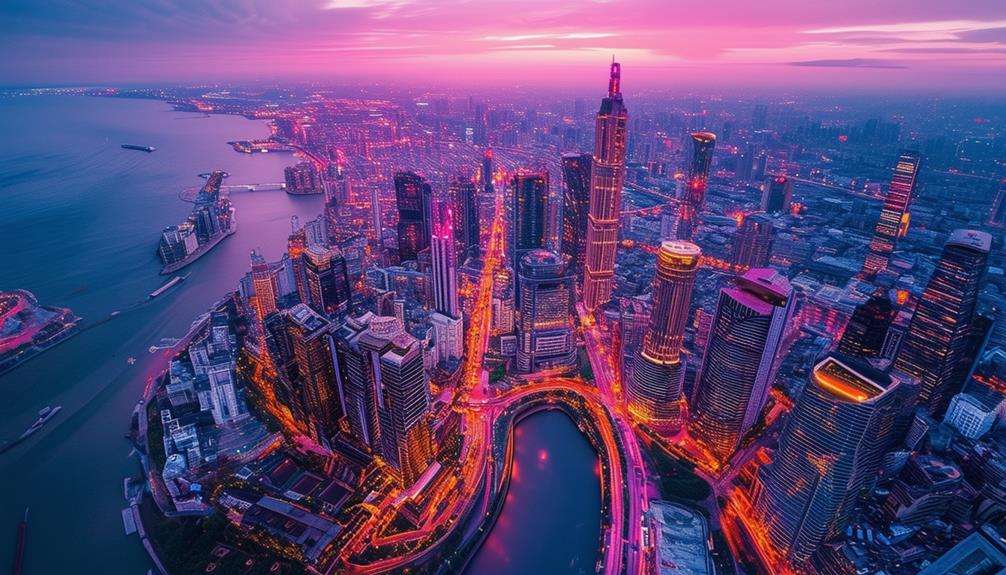
Drones offer new perspectives by capturing previously unreachable angles. Enhanced cinematic techniques introduce dynamic movement and sweeping views, elevating your projects. Accessible aerial artistry with drones transforms ordinary scenes into extraordinary visuals.
Innovative Perspectives Achieved
Drone technology has revolutionized photography and videography by offering stunning aerial views, unlocking creative possibilities that were once unimaginable. Drone photography now provides breathtaking images of landscapes, architecture, wildlife, and sports from previously unattainable perspectives. The advent of 360° drone photography enhances this experience, offering immersive, virtual reality-like scenes explored from every angle.
Technological advancements have been crucial to these innovations. Modern drones feature extended flight times, advanced camera systems, and autonomous capabilities, simplifying the capture of high-quality, dynamic aerial footage. These developments have broadened the scope of creative applications, including real estate marketing, event coverage, and even search and rescue operations.
However, understanding and adhering to safety regulations and privacy concerns is essential for professional drone photographers and operators. Compliance with licensing requirements and operational standards ensures not only the safety and legality of drone use but also supports the integrity and growth of this burgeoning technology field.
Enhanced Cinematic Techniques
Drones have revolutionized cinematic techniques, offering filmmakers the ability to capture dynamic aerial shots that enhance visual storytelling. As a cinematographer, you're no longer limited to static, ground-based perspectives. Drones provide the capability for aerial tracking, panning, and orbiting, allowing you to create breathtaking sequences that significantly elevate cinematic value.
Imagine filming a complex action scene from above, seamlessly following the movement with fluid, dynamic shots. The storytelling possibilities are vast. You can establish the grandeur of a location with sweeping aerial views or immerse your audience in the perspective of a bird in flight. Drones make it possible to achieve smooth, sweeping shots that once required a helicopter, making such visuals accessible even for smaller productions.
Beyond the expansive views, drones offer unique angles and perspectives that enrich your visual storytelling. They help convey emotions and themes in innovative ways. By leveraging these advanced cinematic techniques, you can enhance your projects, making each shot more engaging and visually stunning. In essence, drones have become indispensable tools for modern cinematographers looking to push the boundaries of film.
Accessible Aerial Artistry
Drones have revolutionized cinematic techniques and are now empowering photographers to explore new creative horizons through accessible aerial artistry. Drone photography enables the capture of stunning landscapes and architectural masterpieces from innovative perspectives previously unimaginable. From hovering over bustling cityscapes to soaring above serene countrysides, drones allow for showcasing intricate details and sweeping panoramic views.
In wildlife photography, drones are transformative. They enable observation and capture of animals in their natural habitats without causing disturbance or intrusion. This non-invasive approach results in more authentic and engaging images, offering unique insights into the lives of wildlife.
Sports photography also benefits significantly from drone technology. By capturing high-speed action from dynamic aerial angles, drones provide fresh and exhilarating perspectives. Whether documenting a thrilling football match or an extreme sports event, drones allow for precise and agile documentation of every moment.
Furthermore, 360° drone photography offers a fully immersive experience that was once limited to virtual reality. This technique broadens creative possibilities, allowing the production of interactive and compelling content that captivates audiences. With drones, the sky is truly the limit for aerial artistry.
Wildlife Observation
High-resolution cameras on drones enable detailed observation of wildlife behavior without disturbing natural habitats. This technology is transformative for wildlife research and conservation, providing unparalleled opportunities to capture images and videos that offer valuable insights into animal behavior and ecosystem health.
Drones facilitate access to remote or otherwise inaccessible areas, simplifying the monitoring of endangered species and their environments. For conservation efforts, drones are indispensable. They allow real-time tracking of animal movements and population dynamics, crucial for protecting vulnerable species.
Drones enable precise and efficient surveys, population counts, and habitat assessments, surpassing the capabilities of traditional methods. This approach saves time and minimizes human impact on wildlife and their surroundings. Equipped with high-resolution cameras, drones gather critical data to support conservation initiatives.
They help monitor migration patterns, detect poaching activities, and provide the necessary tools for informed decision-making. Ultimately, drones revolutionize wildlife observation and protection, ensuring the preservation of these incredible creatures and their habitats for future generations.
Architectural Photography
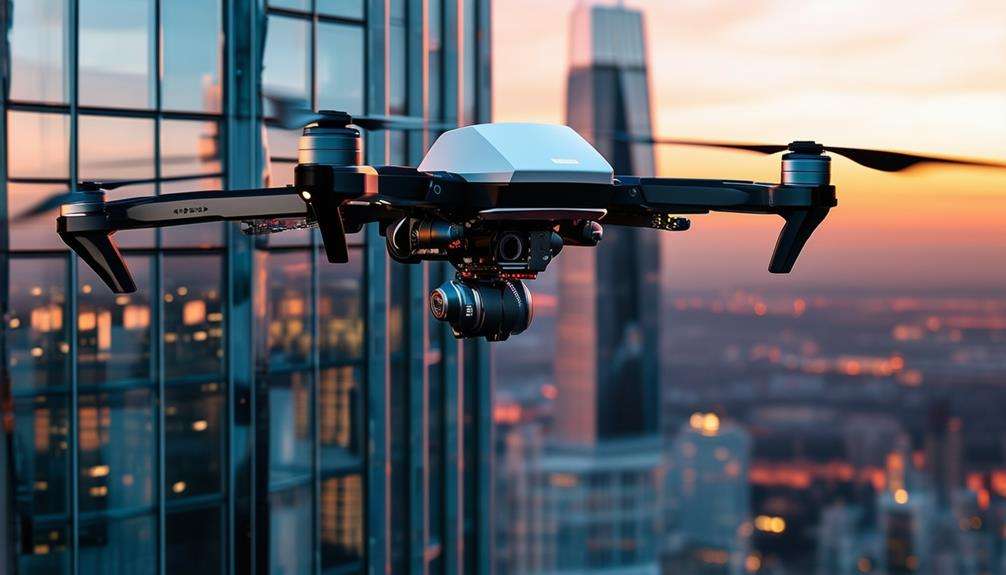
Drones have revolutionized architectural photography by providing unique aerial perspectives that were previously unattainable. These sweeping views highlight a building's symmetry and structure, offering extraordinary shots that ground-level photography can't achieve.
Using drones, you can capture intricate design details and patterns often missed from the ground. These aerial perspectives offer a fresh approach that enhances architectural visuals, making your projects stand out. Imagine showcasing a building's elegance and complexity through stunning aerial views, providing clients and audiences with a comprehensive understanding of the project's grandeur.
Architectural firms benefit greatly from this technology, using drones to capture breathtaking shots for marketing and promotion. These visuals can be used in portfolio presentations to effectively engage clients and stakeholders. Drones' ability to showcase the full scale and design intricacies of a project makes them indispensable in modern architectural photography. Incorporating drones into your workflow not only improves the quality of your visuals but also opens new opportunities to highlight the beauty and sophistication of architectural projects.
Regulatory Challenges
Navigating regulatory challenges is crucial when integrating drones into your architectural photography workflow. In the U.S., the FAA requires registration for all drones over 0.55 pounds. For commercial use, obtaining a Part 107 Remote Pilot Certificate is essential, ensuring compliance with operational rules and safety protocols.
Privacy concerns are also significant. Flying a drone over private property without permission can lead to legal issues, so always seek consent beforehand. Additionally, be mindful of no-fly zones, such as areas around airports, government buildings, and certain public events, as violations can result in severe penalties and affect your ability to operate drones.
Drone regulations evolve rapidly, making it essential to stay updated on the latest rules and amendments. By understanding and adhering to these regulatory requirements, you can focus on capturing stunning aerial shots while maintaining legal compliance.
Future Trends
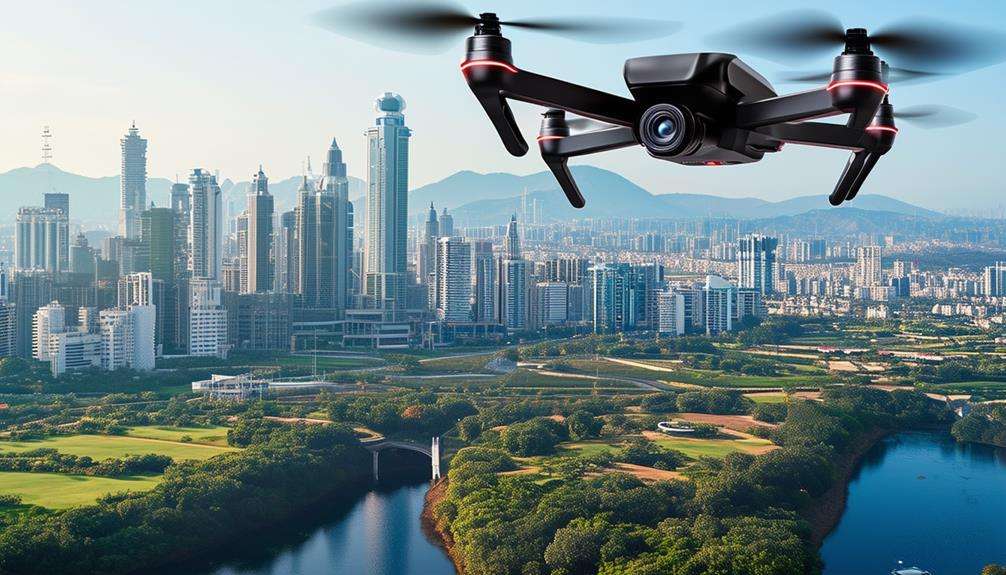
Emerging trends in aerial photography, such as AI integration and advanced sensor technology, promise to revolutionize how images are captured with drones. Artificial intelligence will enable drones to perform real-time analysis, enhancing image quality and automating scene recognition. Imagine your drone identifying and focusing on key elements without manual intervention.
Advanced sensor technology is another transformative development. Specialized sensors, including thermal imaging and multispectral sensors, will unlock new possibilities for environmental conservation and commercial aerial photography. You'll be able to assess crop health, monitor wildlife, and detect heat leaks in buildings with unprecedented accuracy.
Technological advancements in drone capabilities, such as longer flight times and improved image stabilization, will allow for more focus on capturing stunning visuals rather than dealing with technical limitations. These innovations are particularly beneficial for real estate and commercial applications, where quality and efficiency are crucial.
Drones are opening new horizons for exploration, making them indispensable tools across various industries. Whether you're a hobbyist or a professional, the future of aerial photography promises excitement and transformation, driven by these emerging trends. Prepare for a new era where your drone isn't just a camera in the sky, but an intelligent, versatile tool for capturing the world.
Conclusion
Drones have revolutionized aerial photography, making it more accessible and innovative. Advances in technology, creative applications in wildlife observation, and new opportunities in architectural photography have expanded the possibilities. Despite regulatory challenges, the future of drone photography remains bright. So, take your drone and explore new perspectives—you never know what breathtaking images you'll capture next!

